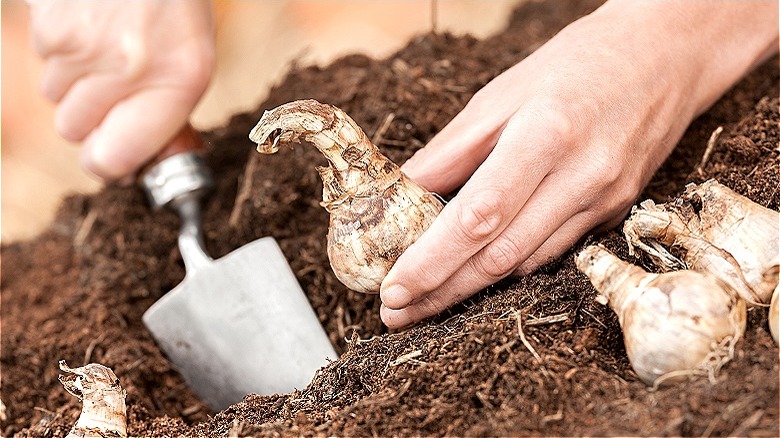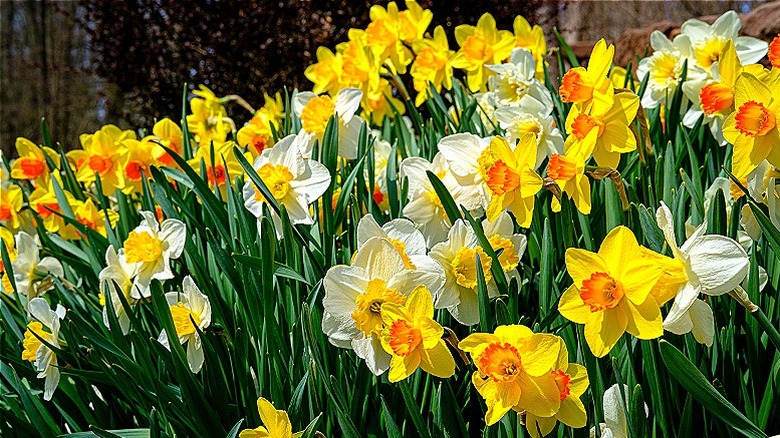Rats can cause serious damage to property and happily will eat the produce growing in your garden, but they tend to avoid a particular flower: daffodils (Narcissus), which makes daffodils an effective rat repellent. These flowers work well in turning rats away due to their scent and because daffodils contain a chemical (i.e., lycorine) that’s toxic to mammals. By planting these flowers, you can naturally deter rats from digging through your garden space and/or wreaking havoc once they get into your home.
When rats take up residence in a house, they cause damage to insulation, beams, pipes, and wiring, the latter of which can pose a serious fire risk. In fact, per a paper by the Environmental Protection Agency, if there’s a fire with an “unknown cause,” the odds are one out of four that a mouse or rat gnawing on wiring or a gas line was responsible. Further, these rodents are also known to carry a variety of diseases, including leptospirosis and hantavirus, according to the Centers for Disease Control and Prevention.
With this said, while daffodils work well as a rodent deterrent, it’s important to be careful when utilizing this method. Lycorine, the toxic chemical in daffodils that repels rats, could also cause harm to humans and pets. According to the American Society for the Prevention of Cruelty to Animals, the consumption of daffodils can be harmful to cats, dogs, and horses. Poison Control also warns that children should be kept away from these flowers as well.
How to plant daffodils to repel rats

If rats have been destroying your garden, daffodils can be planted in pots or in the ground nearby to offer some protection. To keep these pests out of your home, try growing daffodils beside entryways, windows, or any cracks in exterior walls. You could also grow the flowers in areas where you’ve previously seen rats or along the edges of your property.
Daffodils do well in sunny areas, and won’t bloom if they only receive low light. When autumn begins, you can start planting your bulbs to have them sprouting by spring. These flowers do best in soil that drains well and need to have between 4 to 6 inches of space between plants. When placing bulbs in the ground, make sure there are 2 inches of space above them before covering them with soil and watering. Once the daffodil flowers start to grow in the spring, you’ll only need to water your plants if it hasn’t rained in a couple of weeks.
Why daffodils are toxic and an effective repellent

While daffodils are gorgeous flowers that smell lovely to humans, rodents don’t enjoy the scent. Further, these flowers, as mentioned, also contain lycorine, an alkaloid, which is poisonous. This chemical is known to deter mice, rabbits, deer, squirrels, and voles, as well as rats. The flower’s bulbs have the most lycorine inside them, but the chemical can be found throughout the whole plant. If an animal happens to eat daffodils, it’ll likely experience gastrointestinal symptoms, such as vomiting and diarrhea, and humans have similar reactions. Additionally, these plants have oxalate crystals that are sharp and can irritate skin when touched.
For all these reasons, many animals, including rats, will avoid these perennials. If you choose to plant daffodils as a rat repellent in your garden, know that the plants do well in growing zones 3 to 8 and that their flowering season will vary by location. Depending on where you live, you could have a way to keep rats away naturally for as long as six months, or as short as six weeks.



